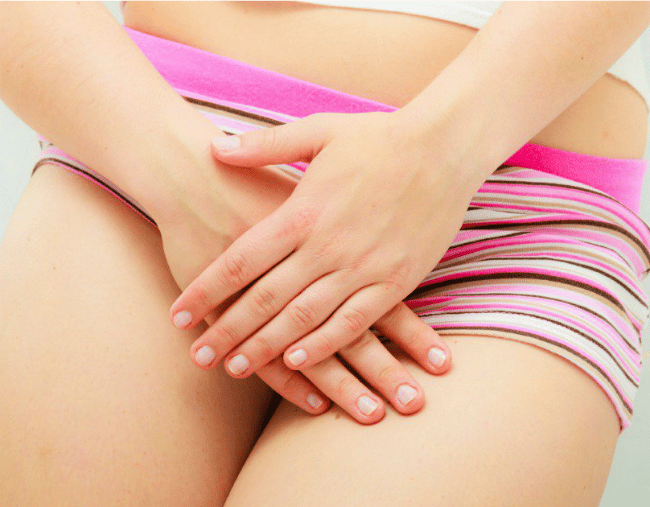
It’s easy to take sex for granted as a healthy person. For people who have vaginas, it means easy lubrication, pleasure during penetration, no allergic reactions to condoms, lubricants, etc., and generally being able to have sex that is pleasurable and fun.
Imagine if every time you tried to have penetrative sex, you had to stop. The intense pain is like stabbing, burning, or pinching. Once you stop touching your vulva, though, the pain stops. It may also happen when trying to insert a tampon, or during a PAP test.
This condition is called vulvodynia, and it’s as common as asthma (7.8% of people in the U.S. have asthma, according to the CDC.) About 8% of people with vaginas will develop primary (from the first time they have sex) or secondary (later in life) vulvodynia.
“Most women will think it’s a yeast infection and try to treat their symptoms that way”, says Dr. Leslie Sadownik, OBGYN and director of the BC Centre for Vulvar Health.
The problem? Yeast infection treatments will only make the pain worse.
Another issue, Dr. Sadownik explains, is that it’s difficult to diagnose.
“There’s nothing to see. There’s no objective change to the skin. Many doctors are not familiar with this condition, and without any visual signs, they will not make a diagnosis.”
It can get worse with age.
Untreated vulvodynia can get worse with age. It goes from pain from direct genital contact only to pain from activities like cycling or exercising; eventually it’s difficult for those people to wear anything close to the skin, like underwear – or even pants. It can develop into something called “burning vulva syndrome,” or generalised vulvodynia, where the vulva is intensely painful most of the time. Yikes.
Doctors don’t quite know the cause for vulvodynia yet, but there are a few treatment options available. Most of them are related to pain management: medication that reduces the feeling of pain, physiotherapy to learn to control the body’s physical reactions to pain and improve pelvic floor strength, and pain management psychotherapy. Some people may be candidates for surgery, but only in a small percentage of cases.

Top Comments
As the Vice President of GAIN.Inc (Gynaecological Awareness Information Network) and a sufferer of various Gynae conditions (and ex Gynae Nurse) I applaud you in recognising this little talked about condition. Vulvodyndia is a label for a condition but does not relate to the CAUSE of it, which is often 'Pudendal Neuralgia' or 'Pudendal Nerve Entrapment' (an irritated or trapped pelvic nerve) Anyone with this condition I urge them to look up PN/PNE and see if the symptoms fit. We run a PN Support Group in Perth but do telephone counselling Aust wide to direct people to the right help. Most Gynae's still see this condition as 'rare' but it is not- just highly UNDER- DIAGNOSED. It caused me to be bedridden for a year, unable to sit and virtually bed bound for 10 yrs....we are have campaigned for more awareness and hopefully things are changing....happy to write a story on this topic if needed. Hopefully we can stop women suffering in silence x
As the Vice President of GAIN.Inc (Gynaecological Awareness and Information Network) and a sufferer of various Gynae conditions (and ex Gynae Nurse) I feel compelled to tell your readers than yes Vulvodynia is more common than people think...but often the CAUSE of it is from a condition called 'Pudendal Neuralgia' or 'Pudendal Nerve Entrapment' I urge women with these symptoms to google this condition to see if their symptoms fit...and then get help from the right specialist. The Gynae world still think this is a 'rare' condition...it is not....just highly UNDER- DIAGNOSED. We run a PN Pain Support Group in Perth and do telephone counselling and have helped so many women get the right treatment. I was bedridden for a year and housebound for virtually 10 yrs with this condition as it took 7 yrs to get diagnosed! (and I worked in the field!) Things have changed now from our campaigning and hope this continues. Happy to write a story on this topic if needed :)